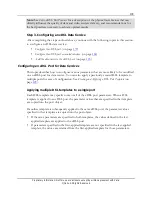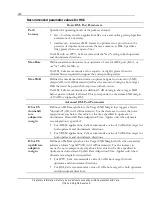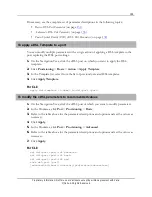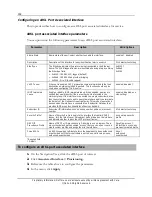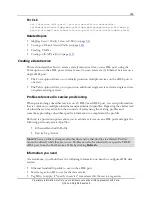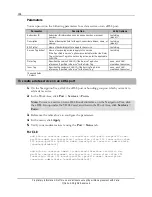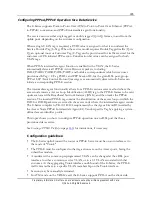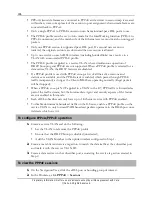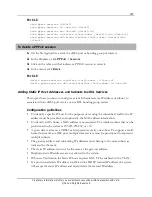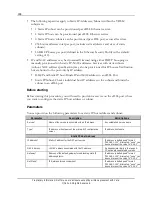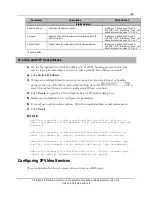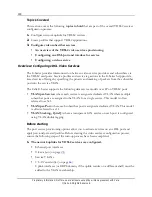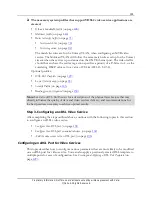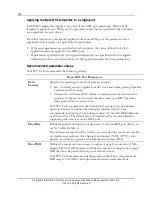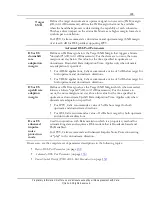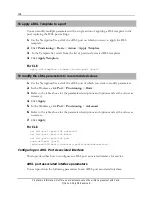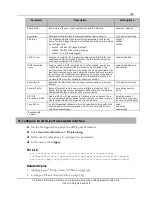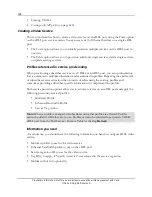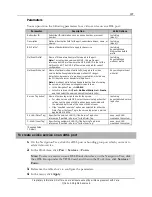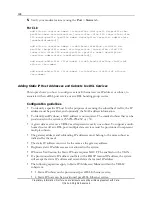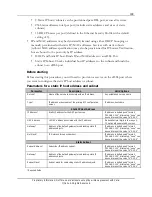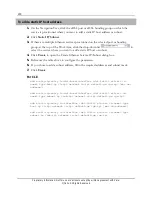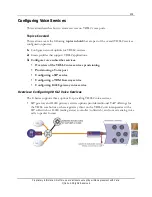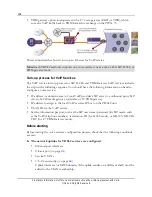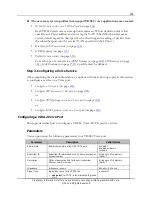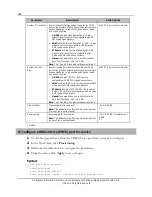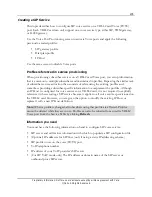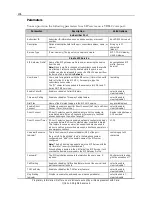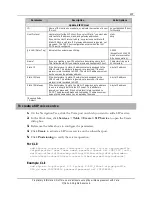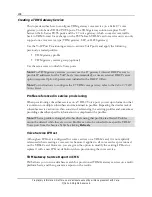
193
Proprietary Information: Not for use or disclosure except by written agreement with Calix.
© Calix. All Rights Reserved.
Target
SNR
Defines the target downstream or upstream signal-to-noise ratio (SNR) margin
(dB, in 0.1 dB increments) defines the SNR margin that must be available
when the handshake process is determining the capability of each subcarrier.
This has a direct impact on the attainable bitrate as ta higher margin forces few
symbols per constellation.
For IPTV, Calix recommends a downstream and upstream target SNR margin
of at least 8 dB for DSL profiles supporting IPTV.
Advanced DSL Port Parameters
DS or US
downshift
rate
adaptation
margin
Defines an SNR margin below the Target SNR Margin that triggers a bitrate
"downshift" (dB, in 0.1 dB increments). For the decrease to occur, the noise
margin must stay below this value for the time specified in upstream or
downstream Downshift Rate Adaptation Time. Applies only when dynamic
rate adaptation is specified.
For ADSL2 applications, Calix recommends a value of 3 dB below target for
both upstream and downstream directions.
For VDSL2 applications, Calix recommends a value of 5 dB below target for
both upstream and downstream directions.
DS or US
upshift rate
adaption
margin
Defines an SNR margin above the Target SNR Margin which, when exceeded,
initiates a bitrate "upshift" (dB, in 0.1 dB increments). For the increase to
occur, the noise margin must stay above this value for the time specified in
upstream or downstream Upshift Rate Adaptation Time. Applies only when
dynamic rate adaptation is specified.
For IPTV, Calix recommends a value of 3 dB above target for both
upstream and downstream directions.
For HSI, Calix recommends a value of 1 dB above target for both upstream
and downstream directions.
Ds or US
enhanced
impulse
noise
protection
mode
Used in conjunction with Retransmission which is a proprietary method for
retransmitting data and requires a DSL modem that is Broadcom based and
PhyR enabled.
For IPTV, Calix recommends an Enhanced Impulse Noise Protection setting
of "phyr" in the downstream direction.
If necessary, see the complete set of parameter descriptions in the following topics:
Basic xDSL Port Parameters
(on page
131
)
Advanced xDSL Port Parameters
(on page
135
)
Power Spectral Density (PSD) xDSL Port Parameters
(on page
139
)

